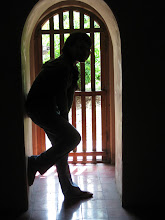
One of my after work rituals is to have a hot cup of jasmine tea..I was doin it since..uhmm..i don’t recall since when.. But anyway, I really enjoy my afternoon tea.. I love its cooling and relaxing effect on me.. I ‘addicted’ to the bitter flavour and jasmine aromas..Hmmm..
So, I decided to find some infos about my number 2 most fave drink (number 1 : still the mineral water). And here it is.
Tea refers to the agricultural products of the leaves, leaf buds, and internodes of Camellia sinensis, prepared and cured by various methods. "Tea" also refers to the aromatic beverage prepared from such cured leaves by combination with hot or boiling waterand the colloquial name for the Camellia sinensis plant itself.
Though today drinking tea is as seen as the symbol of Britishness but originally Tea birth in Asia. The plant originated in southeast Asia, specifically northeast India, north Burma, southwest China and Tibet. It was introduced to more than 52 countries, from this ‘centre of origin’." Yunnan Province has also been identified as "the birthplace of tea...the first area where humans figured out that eating tea leaves or brewing a cup could be pleasant". Indeed, Fengqing County, in Lincang City area of Yunnan Province, is said to be home to the world's oldest cultivated tea tree-- some 3,200 years old.
Tea is traditionally classified based on producing technique:
White tea: Unwilted and unoxidized
Yellow tea: Unwilted and unoxidized but allowed to yellow
Green tea: Wilted and unoxidized
Oolong: Wilted, bruised, and partially oxidized
Black tea: Wilted, crushed, and fully oxidized
Post-fermented tea: Green Tea that has been allowed to ferment/compost
There are terms of tea that contains no Camellia sinensis or the tea plant such as herbal tea and red tea. It refers to an infusion or tisane of fruit or herbs that contains no Camellia sinensis.
Almost all teas in bags and most other teas sold in the West are blends. Blending may occur in the tea-planting area (as in the case of Assam), or teas from many areas may be blended. The aim is to obtain better taste, better price, or both as more expensive, better-tasting tea may cover the inferior taste of cheaper varieties. Blending may also achieve a more consistent taste for the blend, regardless of the variation of taste among pure teas.
Various teas, as sold, are not pure varieties but have been enhanced through additives or special processing. Tea is indeed highly receptive to inclusion of various aromas; this may cause problems in processing, transportation and storage, but also allows for the design of an almost endless range of scented variants, such as vanilla-flavored, caramel-flavored and many others.
Tea contains antioxidant. Also, Tea has more caffeine per pound than coffee yet when preparing tea you use lesser amount than you would preparing coffee. And Tea has almost no carbohydrates, fat, or protein.
So, I think I'm doin a good habit by drinking tea every afternoon (based on my personal research..no medical research, of course)..Interested?!grab a cup of hot tea and feel the soothing moment you'll have..;)
Taken from http://www.en.wikipedia.org/
So, I decided to find some infos about my number 2 most fave drink (number 1 : still the mineral water). And here it is.
Tea refers to the agricultural products of the leaves, leaf buds, and internodes of Camellia sinensis, prepared and cured by various methods. "Tea" also refers to the aromatic beverage prepared from such cured leaves by combination with hot or boiling waterand the colloquial name for the Camellia sinensis plant itself.
Though today drinking tea is as seen as the symbol of Britishness but originally Tea birth in Asia. The plant originated in southeast Asia, specifically northeast India, north Burma, southwest China and Tibet. It was introduced to more than 52 countries, from this ‘centre of origin’." Yunnan Province has also been identified as "the birthplace of tea...the first area where humans figured out that eating tea leaves or brewing a cup could be pleasant". Indeed, Fengqing County, in Lincang City area of Yunnan Province, is said to be home to the world's oldest cultivated tea tree-- some 3,200 years old.
Tea is traditionally classified based on producing technique:
White tea: Unwilted and unoxidized
Yellow tea: Unwilted and unoxidized but allowed to yellow
Green tea: Wilted and unoxidized
Oolong: Wilted, bruised, and partially oxidized
Black tea: Wilted, crushed, and fully oxidized
Post-fermented tea: Green Tea that has been allowed to ferment/compost
There are terms of tea that contains no Camellia sinensis or the tea plant such as herbal tea and red tea. It refers to an infusion or tisane of fruit or herbs that contains no Camellia sinensis.
Almost all teas in bags and most other teas sold in the West are blends. Blending may occur in the tea-planting area (as in the case of Assam), or teas from many areas may be blended. The aim is to obtain better taste, better price, or both as more expensive, better-tasting tea may cover the inferior taste of cheaper varieties. Blending may also achieve a more consistent taste for the blend, regardless of the variation of taste among pure teas.
Various teas, as sold, are not pure varieties but have been enhanced through additives or special processing. Tea is indeed highly receptive to inclusion of various aromas; this may cause problems in processing, transportation and storage, but also allows for the design of an almost endless range of scented variants, such as vanilla-flavored, caramel-flavored and many others.
Tea contains antioxidant. Also, Tea has more caffeine per pound than coffee yet when preparing tea you use lesser amount than you would preparing coffee. And Tea has almost no carbohydrates, fat, or protein.
So, I think I'm doin a good habit by drinking tea every afternoon (based on my personal research..no medical research, of course)..Interested?!grab a cup of hot tea and feel the soothing moment you'll have..;)
Taken from http://www.en.wikipedia.org/










0 komentar:
Post a Comment